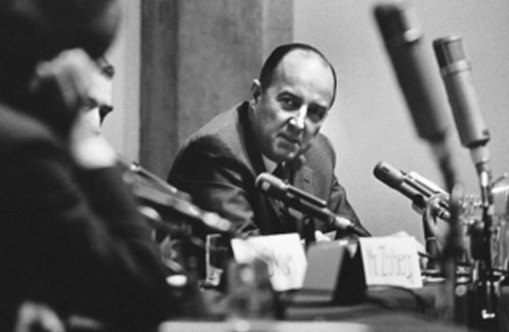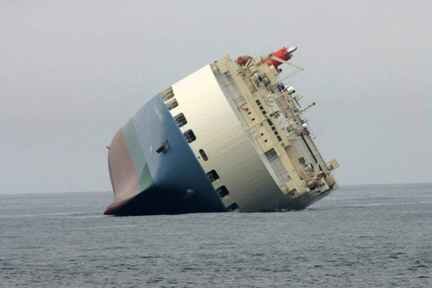
Strategic Thinking & Strategic Action
Fostering strategic thinking and strategic action by organizational leaders since 2007.
Archive
- November 2024
- October 2024
- August 2024
- July 2024
- June 2024
- May 2024
- April 2024
- February 2024
- January 2024
- December 2023
- November 2023
- October 2023
- July 2023
- August 2021
- April 2021
- March 2021
- February 2021
- November 2020
- October 2020
- September 2020
- July 2020
- June 2020
- May 2020
- March 2020
- October 2019
- September 2019
- July 2019
- April 2018
- January 2018
- December 2017
- November 2017
- October 2017
- September 2017
- August 2017
- January 2017
- December 2016
- November 2016
- October 2016
- September 2016
- August 2016
- February 2016
- October 2015
- March 2015
- November 2014
- October 2014
- September 2014
- July 2014
- May 2014
- March 2014
- February 2014
- December 2013
- September 2013
- August 2013
- March 2013
- February 2013
- December 2012
- October 2012
- June 2012
- May 2012
- March 2012
- February 2012
- January 2012
- December 2011
- November 2011
- October 2011
- September 2011
- August 2011
- June 2011
- May 2011
- April 2011
- March 2011
- February 2011
- April 2010
- October 2009
- June 2009
- May 2009
- April 2009
- March 2009
- February 2009
- May 2008
- February 2008
- August 2007
-
Action-oriented bias
- Nov 17, 2017 Trump trap: Action-oriented bias Nov 17, 2017
-
Approach-avoidance
- Sep 21, 2016 Approach or avoid? Sep 21, 2016
-
Bell curve bias
- Mar 28, 2020 We are biased by the bell curve Mar 28, 2020
-
Choice
- Oct 5, 2016 Managing choice Oct 5, 2016
-
Coaching
- Jan 22, 2024 Coaching and change Jan 22, 2024
- Apr 1, 2021 Let’s not be complacent about our ignorance! Apr 1, 2021
- Mar 10, 2021 So much can go wrong. Here’s how to make it go right. Mar 10, 2021
- Mar 10, 2021 Why settle? Go for the gold! Mar 10, 2021
- Mar 10, 2021 It's time for spring training. Are you ready to play on the A Team? Mar 10, 2021
- May 5, 2020 Avoid “the big fail”! Join a group. May 5, 2020
-
Consensus
- Dec 6, 2016 No consensus for consensus Dec 6, 2016
-
Decision biases cases
- Oct 19, 2020 Short-sighted thinking: The case of the “hot new smartphone” Oct 19, 2020
- Sep 10, 2020 Changing our thinking to feel better. Yes, we do that! Sep 10, 2020
- Oct 24, 2019 Remember, history is written by the survivors Oct 24, 2019
- Oct 22, 2019 Beliefs about a group matter Oct 22, 2019
- Oct 15, 2019 Not knowing we don’t know Oct 15, 2019
- Sep 19, 2017 Case 12: Not missing the opportunity to lose billions Sep 19, 2017
- Aug 29, 2017 Case 11: Getting bitten by not seeing it Aug 29, 2017
- Aug 29, 2017 Case 10: When what worked didn’t work Aug 29, 2017
- Aug 28, 2017 Case 9: The climbers who perished by succeeding Aug 28, 2017
- Aug 28, 2017 Case 8: No accounting for incompetence Aug 28, 2017
- Aug 16, 2017 Case 7: Blind or incompetent? Perhaps both… Aug 16, 2017
- Aug 16, 2017 Case 6: Seeing what he wanted to see Aug 16, 2017
- Aug 13, 2017 Case 5: Getting burned by past successes Aug 13, 2017
- Aug 2, 2017 Case 4: I’m the boss, so I am right! Aug 2, 2017
- Aug 2, 2017 Case 3: The experts were wrong Aug 2, 2017
- Aug 2, 2017 Case 2: The battle that didn’t go as expected Aug 2, 2017
- Dec 12, 2016 Failure without facilitation: The French Canal Disaster Dec 12, 2016
- Oct 26, 2015 Decision traps, flaws and fallacies: Learn from my unexpected big decision Oct 26, 2015
-
Decision making
- Nov 6, 2024 Rise of the poker pros: 10 lessons for great success Nov 6, 2024
- Jan 5, 2024 What’s your magic number? Jan 5, 2024
- Oct 9, 2023 AI revisited: Will it ever make perfect decisions? Oct 9, 2023
- Sep 4, 2019 “The instant of decision is madness” Sep 4, 2019
- Apr 23, 2018 Despite our growing ignorance, we must decide Apr 23, 2018
- Apr 12, 2018 Can “Big Data” deliver “the right decision”? Apr 12, 2018
- Jan 18, 2018 The worst accident: “We’re going!” Jan 18, 2018
- Mar 8, 2015 10 surprising mental traps: Why we make bad decisions Mar 8, 2015
- Mar 10, 2014 Often wrong but never in doubt Mar 10, 2014
-
Decision making biases
- Mar 10, 2021 So much can go wrong. Here’s how to make it go right. Mar 10, 2021
-
Evidence
- Dec 16, 2016 Misuse of evidence can zap your strategy Dec 16, 2016
-
Evolution
- Aug 6, 2016 Smart phones on the savannah Aug 6, 2016
-
Gratitude
- Oct 25, 2017 Thank you for our connection Oct 25, 2017
-
Group decisions
- Nov 15, 2016 #2 error: Not using the group advantage Nov 15, 2016
- Oct 22, 2015 Open up your thinking: Make better decisions in a group process Oct 22, 2015
-
Leadership
- Nov 14, 2016 #1 error: The leader problem Nov 14, 2016
- Feb 1, 2016 Leaders who mislead: A tale of two movies Feb 1, 2016
-
Pre-mortem
- Sep 12, 2016 Thinking “as if” Sep 12, 2016
-
Risk
- Jun 9, 2020 The Black Swan and us Jun 9, 2020
- Jan 10, 2017 The risk of ignoring risk Jan 10, 2017
- Oct 14, 2016 Risk and regret Oct 14, 2016
-
Strategic planning
- Nov 10, 2024 Are you ready to bat? Nov 10, 2024
- Oct 9, 2024 Drift and big change challenge our success Oct 9, 2024
- Aug 19, 2024 Get real when you plan! Aug 19, 2024
- Apr 10, 2024 Bridge the strategy gap Apr 10, 2024
- Feb 23, 2024 Don't waste your time planning, unless... Feb 23, 2024
- Dec 18, 2023 The secret sauce of successful plan implementation Dec 18, 2023
- Nov 20, 2023 How to build commitment to change, revisited Nov 20, 2023
- Oct 3, 2023 Success Starts With a Big Vision Oct 3, 2023
- Aug 24, 2021 Sometimes you get what you need Aug 24, 2021
- Feb 25, 2021 Do you measure up? Feb 25, 2021
- Jul 28, 2020 Forget business as usual Jul 28, 2020
- Oct 9, 2014 What’s driving your organization? Oct 9, 2014
- Feb 20, 2014 This is not an infomercial Feb 20, 2014
- Feb 11, 2014 The Big Fail Feb 11, 2014
- Mar 12, 2013 Parsimony and planning Mar 12, 2013
-
Strategic thinking
- Feb 27, 2024 Desirable difficulties Feb 27, 2024
- Jan 13, 2024 Business model question: Produce or provide? Jan 13, 2024
- Jan 5, 2024 What’s your magic number? Jan 5, 2024
- Jul 5, 2023 Think wide to succeed: How will you compete? Jul 5, 2023
- Mar 25, 2014 Flight 370 and strategic thinking Mar 25, 2014
-
Strategy
- Jul 23, 2024 Your pricing says it all… But what does it say? Jul 23, 2024
- Jun 23, 2024 We are people, not transactions Jun 23, 2024
- May 22, 2024 Is excellence - or failure - ahead? Answer five questions to know May 22, 2024
- Apr 8, 2024 What do your customers expect? Apr 8, 2024
- Nov 13, 2023 Demand a great brand! Nov 13, 2023
- Oct 31, 2017 Why not plan to be great, like Elon Musk? Oct 31, 2017
-
Success
- Jul 24, 2019 22 principles I have learned from being an athlete Jul 24, 2019
-
Sunk cost fallacy
- Mar 21, 2015 Sunk cost fallacy: Throwing good money after bad Mar 21, 2015

Case 2: The battle that didn’t go as expected
Confederate General Robert E. Lee believed that his troops could overrun the Federal's front line at the battle of Gettysburg. He was wrong: Pickett's charge by 15,000 Confederate soldiers against 6,500 entrenched Federals resulted in over 6,000 Confederate casualties and ended Lee’s last invasion of the north. Here are several traps and errors that may have led Lee to believe the charge would succeed.

The risk of ignoring risk
What is startling is that the engineer who invented the digital camera worked for the giant of photography, Kodak. Kodak owned the patent for what the engineer invented. Yet, Kodak proceeded to bury the technology rather than commercialize it. Had it instead adopted the technology on a timely basis, today it could be the Apple of digital imaging. The New York TImes' Lens blog offers a great summary of the invention of the digital camera and Kodak's failure to embrace it. The attitude at Kodak was that no one needed digital photos. Film and photos printed on paper, using silver halide technology, had ruled for 100 years and Kodak ruled film and paper.photography. How wrong was that conclusion! Evidence was ignored as digital photography caught hold. Biases reined at Kodak.

Misuse of evidence can zap your strategy
Bad strategic decisions can result from insufficient or misused evidence. We are programmed to immediately "fit" the information we have at hand to our experience – magnified by what is most current and what seems "like" or relevant to the situation - whether it is applicable or sufficient. Here's an example of a seemingly very smart organization that stumbled because of insufficient and misused evidence.

Failure without facilitation: The French Canal Disaster
In 1879, the Congrès International d'Etudes du Canal Interocéanique (International Congress for Study of an Interoceanic Canal) was convened in Paris under the auspices of the Société de Géographie de Paris to consider proposals to build a canal across Central America, from the Caribbean Sea to the Pacific Ocean. Ferdinand de Lesseps, the French ex-diplomat who had spawned and led the company that created the Suez Canal, chaired the conference and dominated the discussions and the decision making. Despite an immense amount of evidence against the success of a sea-level canal across the Isthmus of Panama, de Lesseps' vision prevailed. More than 22,000 lives were lost and thousands of investors were out the equivalent of nearly $6 billion in current dollars when that Panama canal venture finally collapsed in 1889. Why was it that the errant views of one Frenchman won out over the combined wisdom of the engineering community, the financial community and many others who had spent time scouting the terrain and who had identified the huge problems of disease, torrential rain, dense rain forest, raging rivers and mountains that stood in the way of success? Why in this striking case did not the underlying wisdom of the group prevail?

No consensus for consensus
The adage that "two heads are better than one" is on the right track. In fact, research shows that consensus decisions reached by five or more people are most often qualitatively superior to individual, majority and leader decisions. Consensus decision making works - when properly used. However, having consensus decision making in the organization's arsenal does not necessary mean that it is regularly used to make the big decisions affecting the organization's future. In fact, organizations typically make strategic decisions without the leader obtaining consensus: In two-thirds of organizations the leader typically decides.

#2 error: Not using the group advantage
Leaders and organizations make a mistake when they don't use the group to make strategic decisions. Research shows groups usually make better decisions. Not using group decision making is one of the 18 categories of biases and poor practices that we have identified that can produce bad strategic decisions.

#1 error: The leader problem
A big reason organizations make poor strategic decisions is the leader, Too often leaders engage in autocratic, leader-centered decision making rather than harnessing the power of the group.

Risk and regret
Regret is a powerful emotion. We don't want to feel regret and seek to avoid it. We not only can feel regret after making a choice, regret that we did not choose what might have been a better option, but we are capable of forecasting our future regret and of taking action now to avoid future regret for not acting. Of course, pursuing an option because we anticipate regret if we don't act does not assure that the choice we make is a "good" risk. Properly assessing the risk and potential return of an option and and whether we act on the option are separable activities. So if regret can get us off dead center and lead us to act, it does not remedy how our mental biases, shortcuts and errors hinder clear-eyed risk assessment.

Managing choice
Research shows that having a limited set of choices - rather than none or only a poor option - is empowering and positive. A limited set of options enables us to focus on each option and paves the way for a better decision. But when the options are multitudinous and are not culled and sharpened, we tend to make a poor choice, latching on to something that attracts us, or falling back on something familiar and comfortable.

Approach or avoid?
Approach-avoidance is a psychological syndrome that affects us all, and through us, our organizations. We discount what might be possible and otherwise exceptional because it daunts us and challenges us to act with intent and resolve, going new directions where the way is not easy nor familiar. We are afraid we will fail. We ignore the truth that we only learn when we bump up against change and challenge what we perceive as boundaries and limits.

Thinking “as if”
One way to help assure that your seemingly great strategy is robust and will produce desired results as opposed to sinking your organization is to conduct a session in which you assess its failure. That’s right, consider conducting what Gary Klein calls a “premortem” (as opposed to a postmortem).

Smart phones on the savannah
So why is it that we humans can go astray in recognizing that we have meaningful choices in our lives and in our organizations, in developing and executing winning strategies, in making the big decisions well when it really counts? Let’s consider the idea that as individuals we are maladapted for modern society. One line of thinking and research proposes that we are optimized for hunting antelope, not for meetings, morning commutes, juggling emails, tweets and posts, and strategy execution.

Leaders who mislead: A tale of two movies
Consider how every-day leaders with bad or misplaced intentions lead us and the business and civic organizations we care about astray. A first step to improving how we make the big decisions necessary to get better outcomes in our organizations and our lives is to recognize how we are being played, kept in the dark and misrepresented. Here's a list of some ways leaders use mental flaws, traps and fallacies to mislead us. (If you are the leader and see elements of your own behavior in this list, please change now!)

Decision traps, flaws and fallacies: Learn from my unexpected big decision
My life was changed by unexpected input into my decision making from a noted journalist and World War II veteran whose plane was shot down and who then spent two years in a German prisoner-of-war camp. I pursued my MBA and a career path which has led to meaningful business roles, strategy consulting and, I hope, useful thought leadership. Making good decisions is at the heart of effective strategic planning and strategic management. That's why I have been taking a deep dive into how we can make big decisions better. Let's examine my life changing exchange with Emmett Dedmon to see what might have been at work that affected my decision making process.

Open up your thinking: Make better decisions in a group process
Group strategy development is better. Having others challenge your thinking typically leads to better results. Also, research shows that averaging multiple judgments produces better outcomes than going with one person's judgment. A big reason to approach strategic planning as group learning is that can expose, mitigate or help avoid many decision making traps.

Connect with thought leaders: Don’t make my mistake
I have been thinking about how thought leadership drives change and why it is so important to be exposed to thought leaders and their ideas. Here's a case in point.

Sunk cost fallacy: Throwing good money after bad
In economics, a sunk cost is any cost that has already been paid and cannot be recovered. The sunk cost fallacy is a mistake in reasoning in which the sunk costs of an activity - instead of the future costs and benefits - are considered when deciding whether to continue the activity. The sunk cost fallacy makes it more likely that a person or an organization continues with an activity in which they have already invested money, time, or effort, even if they would not start the activity had they not already invested in it. The greater the size of the sunk investment, the more people tend to invest further, even when the return on added investment appears not to be worthwhile. This trap is sometimes described as "throwing good money after bad," because the resources and effort are already lost, no matter what you do now.

10 surprising mental traps: Why we make bad decisions
In research for my upcoming book, Big Decisions: Why we make them badly, how we can make them better, I have discovered more than 280 psychological, perception, memory, logic, physical and social effects, errors, biases, shortcuts, fallacies and traps that lead us into making bad decisions. Here are ten of what I find to be among the most surprising and thorny traps. They go by varied names and have many disguises. I have grouped these traps in three categories, and for each offer a definition and thoughts about why it poses a problem for decision making, and then give some examples of how they can lead us astray. Read on to find the answers to the "true or false" quiz and to learn much more about ways we unknowingly trip ourselves up.

Find out where strategy is going
The Association for Strategic Planning's World Strategy Week, a big event I helped create as ASP's president, is underway this week. It features a series of webinars with panels of leading strategy thinkers and practitioners from around the world, accompanied by a variety of other events worldwide presented by ASP's chapers and partners.

What’s driving your organization?
Ever notice how some organizations generally seem to be on a positive trajectory, while others are constantly playing catch-up, encountering roadblocks and struggling to get on a better track? Among the former are Proctor & Gamble, General Electric, Southwest Airlines and Oracle. Among the latter are Sears Holdings, BlackBerry and Sony. Looking deeper, you may also notice that some of the organizations that appear to have their act together at times have had to do a major reset to get back on an upward path. Examples that come to mind are IBM moving to services, Starbucks going back to basics and Apple pushing beyond its Mac niche market and launching the iPod. As the leaders of struggling companies will attest, it's a very difficult task to right a sinking ship. Where to focus and what to do are paramount issues. Obviously, business as usual is not working and incrementalism is not the answer. We have come up with a set of questions that we think every organizational leader should ask.
